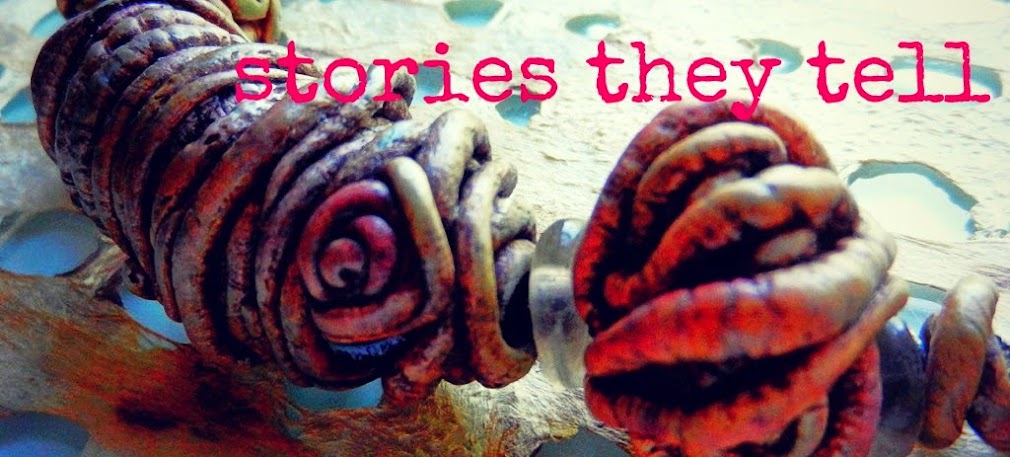As I’ve mentioned in this blog before, your piece will become truly unique only if you address every single aspect of its design and source or design it yourself. That means devising your own shapes and forms whenever possible. The ‘quick sketching’ method works for this—for instance, choosing a heart shape—and spending a minute or two sketching that shape very quickly in your notebook. Don’t worry about size, just let your brain and all its accumulated input stream out through your pencil. Don’t edit. Your can use your copier to alter size later to suit your purpose for the element. One exercise that’s fun is to choose a few sketched shapes, make larger and smaller sizes of each using the copier and then combine them into one piece, say—a necklace, keeping the same colorway for all the elements.
Now that my work is finally in a gallery—the Art of Vermont Artisans Gallery in downtown Randolph, Vermont-- I’ve been working to change out my inventory to reflect the seasons and jewelry-gifting holidays. Valentine’s Day garners an enormous response from shoppers in search of the perfect gift so it’s a great excuse to obsess a bit with the ubiquitous ‘heart’ shape. Every year I do a sketchbook page full of heart shapes and this year my page looked like this.
I find there’s something compelling about the traditional heart shape—it can morph and mold into so many variations. The basic shape, I think, is so well-balanced in its simplicity that it lends itself to abstraction and innovation. It’s got semiotic overtones as well--semiotics being “the study of meaning-making, the philosophical theory of signs and symbols” according to Wikipedia—so the shape itself means something to us culturally and anthropologically on a subconscious level. This is a good thing for the jewelry designer because it means that the heart shape is appropriate in any season for adornment, not just for a sweetheart-themed holiday in February, unlike a snowman pin, for instance. It’s also a very universal symbol.
Organic heart - 2015 - polymer clay,
acrylic and oil paints, Prismacolor pencils
Not necessarily 'Valentine's Day' earrings - polymer clay, acrylic paint, crayons, Lillypilly slate veneer, handmade copper earwires
'Landscapes of the Heart' - pin/pendant of
polymer clay, acrylic paint, Kroma crackle medium
Primitive heart cuff - polymer clay, acrylic and oil paints, Nunn Designs copper cuff base
'Helter-Skelter' heart element-- older work using mokume gane technique
Valentine bookmark - polymer clay, acrylic paint,
crayon, Jan's Jewelry metal bookmark form
Textured heart earrings, 2015 -- polymer clay,
acrylic paint, crayons, handmade texture
plate and earwires












